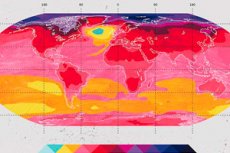New publications
Weather modeling will help predict future pandemics
Last reviewed: 29.06.2025

All iLive content is medically reviewed or fact checked to ensure as much factual accuracy as possible.
We have strict sourcing guidelines and only link to reputable media sites, academic research institutions and, whenever possible, medically peer reviewed studies. Note that the numbers in parentheses ([1], [2], etc.) are clickable links to these studies.
If you feel that any of our content is inaccurate, out-of-date, or otherwise questionable, please select it and press Ctrl + Enter.

In their new project, the scientists attempted to determine how to use climate and weather studies to predict the occurrence of pandemics in advance and correctly.
Science does not stand still: scientists have repeatedly tried to monitor and predict outbreaks of a particular viral disease, including SARS-CoV-2 coronavirus. Approaches to such forecasting have included risk information, comparative and exchange actions, development of new models, etc. The next, more adapted method is to use risk-based forecasting. The next, more adapted method is the assessment of weather and climate, conditioning the spread of a particular pathology. For many decades, the World Meteorological Organization has been sharing information in real time, which can be used as a basis for forecasting by the World Health Organization. Although the current atmospheric assessment is fairly accurate, obtaining information regarding pandemics can be misleading. Among other things, it is difficult to predict the formation of virus mutations that may affect transmission and severity of pathology.
Ensuring standardized and systematic data sharing is important, which is particularly necessary in the context of an already existing pandemic. As practice has shown, health-care providers have encountered several problems, including inadequate documentation and incomplete collection of information, as well as inadequate assessment of the effectiveness of treatment interventions.
In general, individual meteorological agencies collaborate with national standardized networks, maintain climate equipment, and communicate with organizations in the field to take timely preventive action when needed. In an effort to empower public health medicine, experts have leveraged an integrated network of meteorological systems to collect and communicate information to the community.
It is quite difficult to predict the appearance of a pandemic unambiguously. It is necessary to take into account a lot of different indicators and constantly refine them. This is especially true for infections that are not fully understood.
Gradual climate change means that weather forecasting often takes place under conditions of great uncertainty. Specialists note the need to develop clear established procedures, communication capabilities, and trusting relationships between representatives of science, politics, and the public. It is important to openly discuss any uncertainties that arise, to be able to recognize and correct their mistakes, which will significantly improve the determination of forecasts and make this process more rational.
More complete information on the topic can be found at the source page of the source link.
